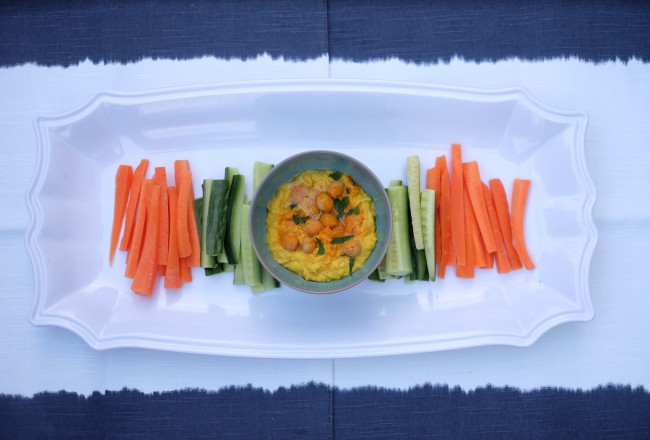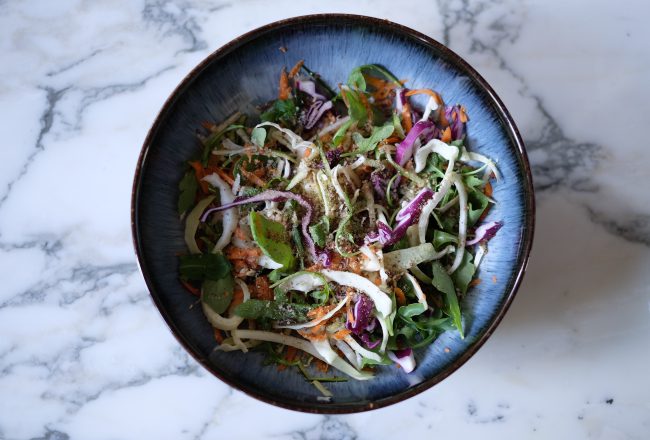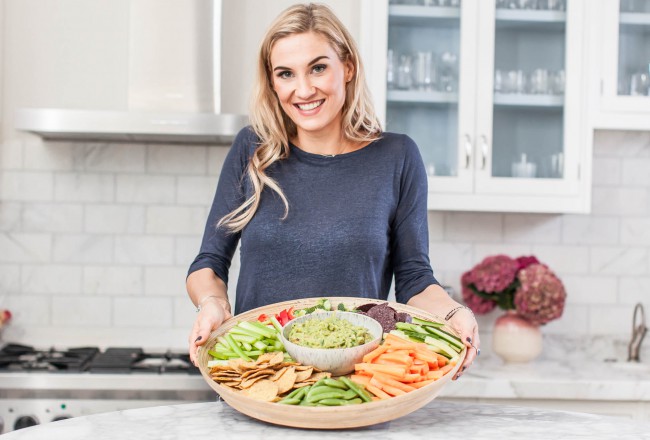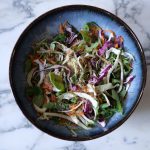What is the paleo diet? Is it one we would recommend following? What principles from it should we all adopt?
One of the most popular diets that has appeared in mainstream health culture in the past few years is the Paleo (Paleolithic) diet, which aims to strip our diet back to what it was some 10,000 years ago.
The Paleo Diet and its scientific claims
The Paleo Diet works on the assumption that our bodies haven’t adapted since we were crawling around like cavemen, and in order to reach our peak level of health in today’s society, and free ourselves from the risk of obesity and diseases of affluence (such as diabetes and cardiovascular disease) we have to return our way of eating back to absolute basics. With sugar, processed food, all dairy products, all grains, and all legumes (e.g. beans, peanuts, lentils) on the hit list, taken to extreme, it is a very strict way of eating.
Various studies have suggested that in fact, because of the wide-ranging differences between different Stone-Age humans and their local environments there was no one diet that can be suggested as a blanket “paleo diet”. In fact, very little is known about the diets of Paleolithic humans, and it is very likely that certain grains and legumes were actually consumed by them because they simply ate whatever was available in the local environment. Even if there was one Paleo diet that could be reasonably relied on to mirror that of stone-age humans, biologists have criticised the Paleo diet on the grounds that 10,000 years is actually more than enough time for our bodies to adapt to dietary additions such as wholegrains, dairy and legumes. Furthermore, our lives, lifestyles and activity levels are significantly different enough to warrant a significantly altered diet.
The case for the Paleo diet: as general nutritional guidelines
No processed food
The Paleo diet’s most basic focus is on cutting out refined sugar and processed foods and replacing them with wholefoods. This, in itself, is a good principle to follow. In fact, it should be the primary focus of any dietary advice given to anyone, of any age, any lifestyle and any state of health. Whatever you do, try to cut out (or at least cut down) on fake, processed, packaged, chemically created or altered food.
Increase protein
Another main principle of the Paleo diet relates to macronutrient composition: essentially, it suggests we should be eating less carbohydrate and more protein and fat. With a few caveats which we will come on to, this is a pretty good guideline to follow. Our modern diets are often lacking in quality sources of protein and are too high in processed and refined carbohydrates. Eating enough protein helps us feel satiated and stops us over-eating, since it takes longer to digest. In this way, a Paleo diet may help with weight-loss and has been shown to improve insulin sensitivity and loss of waist circumference in patients with diabetes. However, protein is not the best source of energy for the body. As discussed in the no-sugar article, our bodies live and breathe carbs, which are digested in the lower-intestine and turned into glucose for energy. A diet too high in carbohydrates can cause our blood-sugar levels to spike, but a diet too low in carbohydrates can leave you with significantly depleted energy levels.
The other caveat about the Paleo protein requirement relates to source. Most people in the world could never afford to live a strict Paleo diet. The amount of meat and animal products that the Paleo diet suggests (up to 55% of your daily intake) is unlikely, in most cases, to come from free-range, organic sources. The quality over quantity rule becomes relevant here – we would prefer you to eat well-sourced animal protein and supplement it with high quality wholegrains (carbohydrates) than be overly strict about how much of your food comes from animal sources. Our view is that 10-35% of your daily calories should come from protein, though this depends a lot on your lifestyle, your exercise levels, your age and your body composition.
The last caveat relates to saturated fat. This is a complicated subject in nutrition and in health generally and we will discuss fat properly in a later post. Suffice to say for now: eating the high quantities of saturated fat suggested by the paleo diet could be dangerous for those with (or at risk of) high cholesterol, clogged arteries or heart disease.
Grain and legumes free?
The paleo diet suggests that fruits and vegetables should be our main source of carbohydrates, but stresses the importance of fibre, so no fibre-stripped juice-diets (here, here). It lists certain “no-go” foods including grains, legumes, and starchy vegetables such as potatoes. Our view is that unless you have an intolerance/allergy to these foods then whole grains (including oats, buckwheat, spelt and rye) as well as starchy vegetables such as potatoes and sweet potatoes and legumes (e.g. chickpeas, lentils, peas, beans) are beneficial for our bodies and that cutting them out entirely in the place of protein is not natural or advisable. These foods contain essential nutrients and much-need fibre to avoid constipation. There are also many scientific studies showing a link between high quality wholegrains (like porridge oats) and a long life.
Diary free?
The paleo diet involves going dairy free. Many people feel a lot better for giving up dairy products. These tend to be people who are either lactose intolerant (where the body doesn’t produce enough of the enzyme lactase needed to digest the lactose present in dairy) or who suffer an intolerance or allergy to cow’s milk protein. In most other cases, people can happily enjoy dairy products daily in small amounts. Dairy products are a really important source of calcium so if you’re giving up dairy on the paleo diet or for any other reason you need to think carefully about what other sources of calcium you’re consuming. We are doing a whole post on dairy/dairy alternatives/calcium sources next week so look out for that if this is an area you are interested in.
Summary and my diet
I love that the Paleo diet has brought the idea of eating unaltered natural food into mainstream consciousness. Could I have caught this, picked it or captured it as my cave dwelling ancestors might have done? The shift away from processed, fake and pre-packaged ready-made and fast food is an unqualified nutritional good.
However, cutting out entire food groups is not something I could ever do and while I love meat, I could never eat as much as the Paleo diet recommends. On days where I have experimented removing all starchy carbohydrates and grains from my diet, I have felt completely exhausted, despite eating enough vegetables, meat and healthy fats.
Although the paleo diet can help with short-term weightloss, taken to extreme, it is not a sustainable diet, either for any individual or for the world generally. Most Western diets probably do need a refocus onto wholesome foods, with more fibre, fat and protein, and less refined carbohydrate. Beyond this, cutting out entire food groups is not only an unsustainable life, but almost definitely not necessary to lead a happy, healthy one.
The recipe here is that family staple, Bolognese, which I prepare in huge batches for the freezer. For a fully paleo meal, serve it on courgetti (spiralised courgette) or with other vegetables, like spiralised butternut squash as pictured above. I like some high quality grains in my diet and courgetti to me just isn’t spaghetti, so I usually serve Bolognese with wholegrain pasta. Sometimes I go half and half (as in, mix a smaller portion of spaghetti with courgetti). If you are gluten free, brown rice spaghetti is pretty close to regular spaghetti.
This recipe also forms the base of lots of other meal ideas– bolognese works in tacos with sour cream and don’t forget about moussaka and lasagne. Add kidney beans, chilli and paprika to make chill con carne. You can also blend this bolognese with a hand blender or in a food processor to make it baby-friendly. Super versatile!
TMA HIDDEN VEGETABLE BOLOGNESE
Ingredients:
- 1kg organic free range mince (I used half pork and half beef. You can also use lamb or veal mince)
- 1 red onion
- 2 cloves garlic
- 1tbs oil (my favourites are coconut oil, olive oil or hemp seed oil)
- 2 carrots (grated)
- 1 courgette (grated)
- ¼ head of cauliflower (made into cauliflower rice in a food processor)
- 150g mushrooms (grated)
- 2x 400g tin organic chopped tomatoes (higher in the beneficial phytochemical lycopene than fresh tomatoes)
- 1 cup bone broth (or any stock)
- 1 tsp mixed herbs
- 250mls of red wine (adults only)
- salt and pepper to taste (none for babies)
- Fresh parsley to serve (small handful, finely chopped)
Method:
Heat oil in a large pan over a medium heat. Add the onion and garlic and cook, until soft, stirring continuously. Add mince and cook, stirring regularly, until beef is brown. Add vegetables and fry for 5 minutes until vegetables start to soften. Add tinned tomatoes, mixed herbs, wine (if using) and bone broth. Simmer, over a very low heat for at least 30 minutes, stirring occasionally, preferably longer. Add extra stock or water if the sauce begins to dry out. Add salt and pepper to taste.
It can be served immediately but if you have the time, allow the Bolognese to cool and transfer it to the fridge overnight if possible. I find it always it tastes so much better the next day! Enjoy!
Photo credits: bowl and plate are both part of the Halo range by Denby









